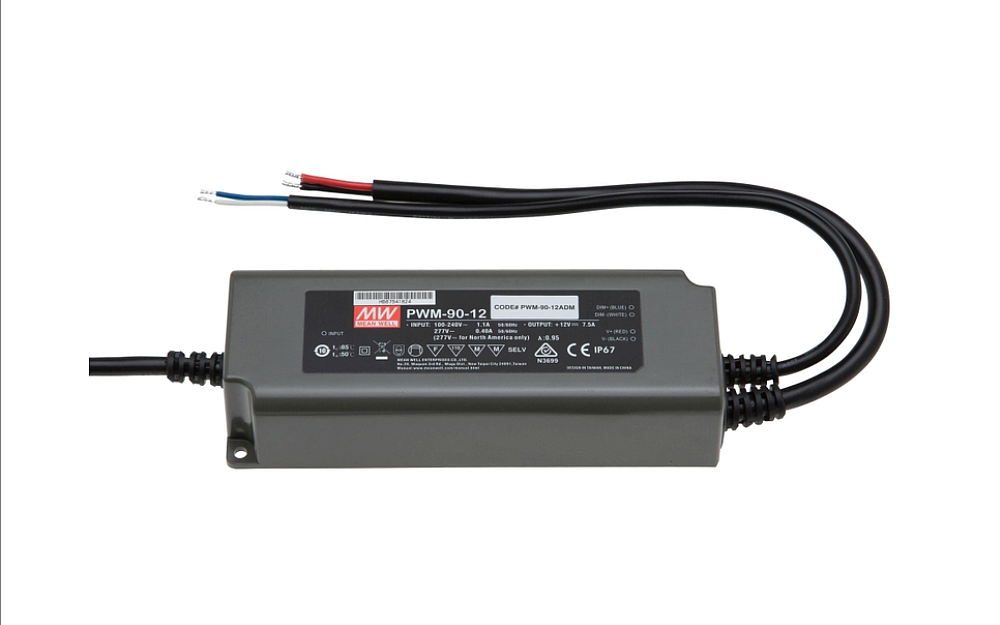
What is the best method of dimming LED strip light?
There are a number of methods that can be used to dim constant voltage LED strip lights. There are pros and cons for each method depending on budget and installation restrictions.
Dimming LED strip light can be achieved by using either a dimmable driver or a non dimmable driver.
USING A NON DIMMABLE LED DRIVER
This is the simplest method as it requires no additional wiring and the use of a non-dimmable driver. The dimming is done on the DCV side of the driver, using a controller inline between the driver and the LED strip light.
Typically there is a controller and a remote, there are also controllers that accept other inputs, such as ‘Push’, 0-10V.
Pros
- In most instances a non-dimmable driver is cheaper than a dimmable driver
- The LED controller will in 99% of cases will produce an even 0-100% range without perceptible flicker.
Cons
- Requires the purchase of a controller
USING A DIMMABLE LED DRIVER
There are a number of different constant voltage dimmable drivers. These can firstly be divided in to two types; dimming on the AC side of the driver or using a signal control injected into the drivers control wires.
Dimming on the AC sided is generally performed by using a triac (phase cut) dimmer. These can be either a traditional rotary dimmer or a push button dimmer mounted to a traditional wallplate.
Signal control uses a number of different protocols such as 1-10V / 0-10V, DAL or DMX. These signals are fed to the driver by a pair of control wires separate to the AC input supply and DC output supply.
Triac (phase cut) dimmable driver
These drivers use a traditional wallplate leading edge or trailing edge dimmer module.
Pros
- No additional wiring (ideal for retrofitting older installations), the dimmer module is connected to the ACV input side of the driver
Cons
- Expensive
- There are many brands on the market and finding a good one can be difficult
- Some do not dim all the way down to off and/or 100%
- Can be noisy and disrupt other electrical equipment
- Can be difficult to find a suitable dimmer module to work well with the driver
Typical brands of triac dimmers are: Clipsal, HPM, Legrand & Diginet.
Signal input dimmable driver
These drivers have an additional pair of wires used to carry the dimming signal. Typical dimming protocols are 0-10V / 1-10V, DALI, DMX, or a variable resistor.
Pros
- Allows for a flexible design with various home automation integrations.
- Cost effective
Cons
- Not ideal for existing installations as an additional pair of signal wires need to be installed.
- Requires the driver to be matched closely to the load, we recommend 90-95%. However the exact load is not always know until the installation has been completed.
When using a signal input dimmable driver, ensure it’s output is PWM
Why is PWM output important? PWM dimming does not require load matching, this means you will always have consistent, full range dimming regardless of driver capacity and/or load. It also allows for identical dimming levels using different size drivers operated by the same dimmer. Meaning, you can have a 150W driver operating a 90W load and a 100W driver operating a 90W load, with both LED luminaries dimming at the same rate. Offering 0-100% dimming and no flicker.


